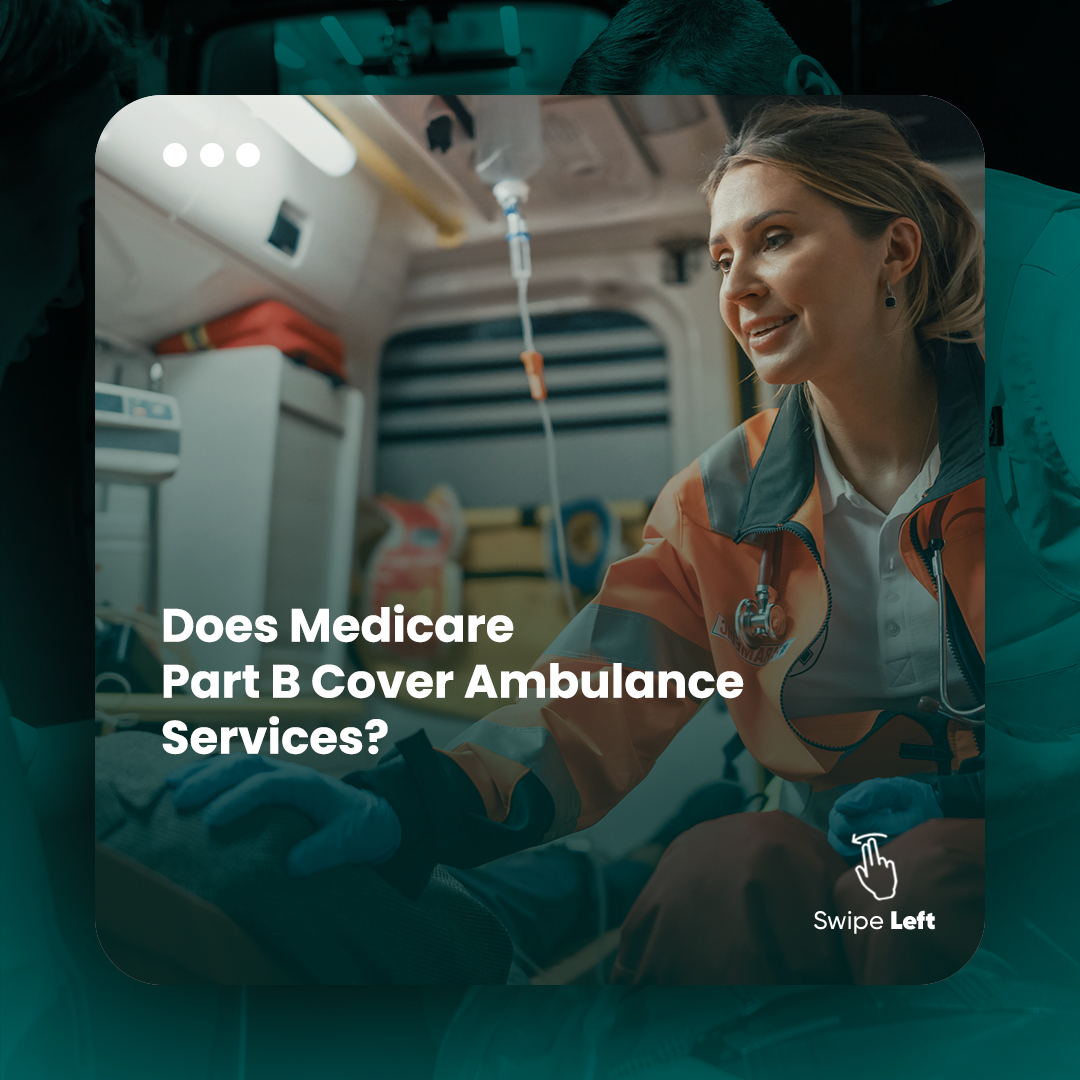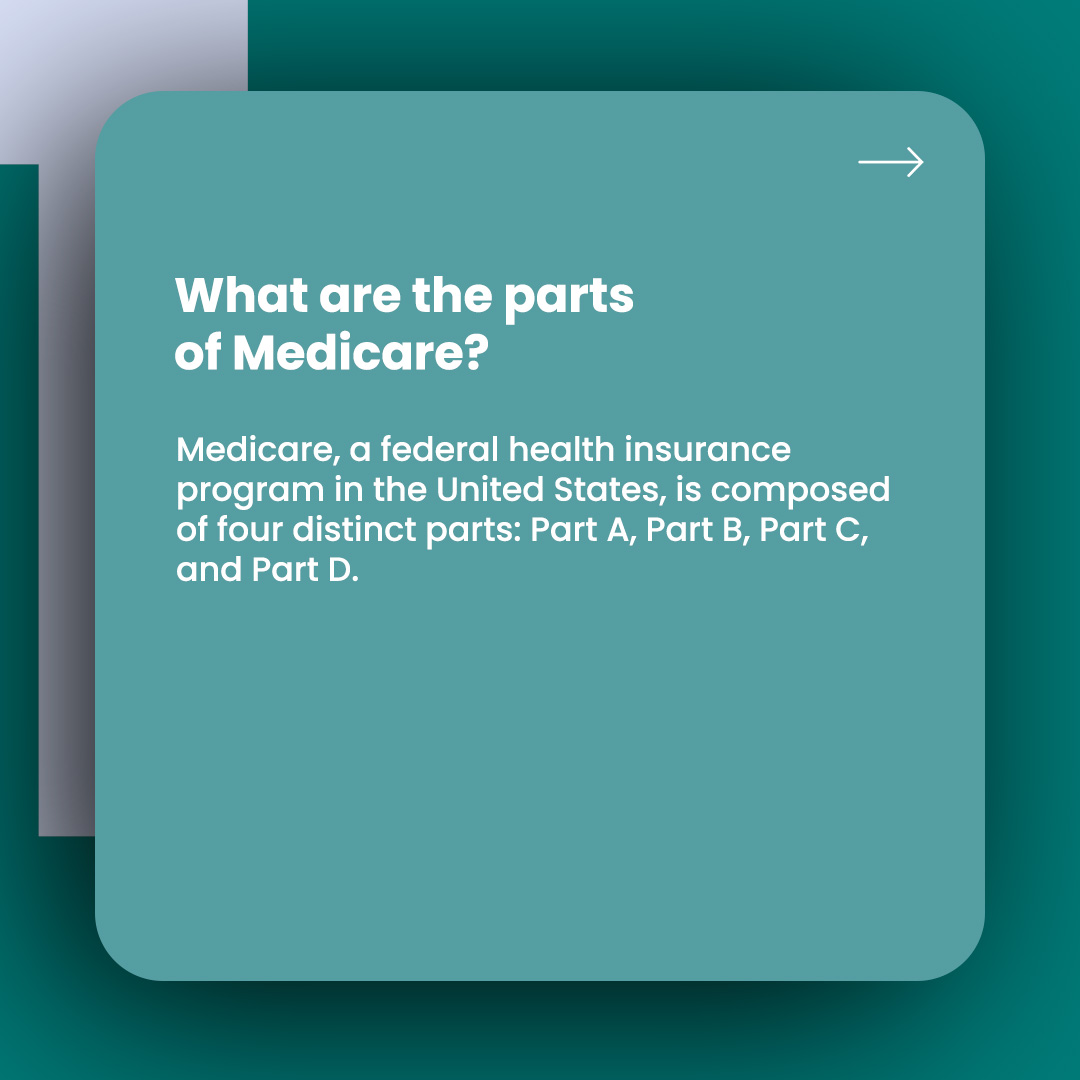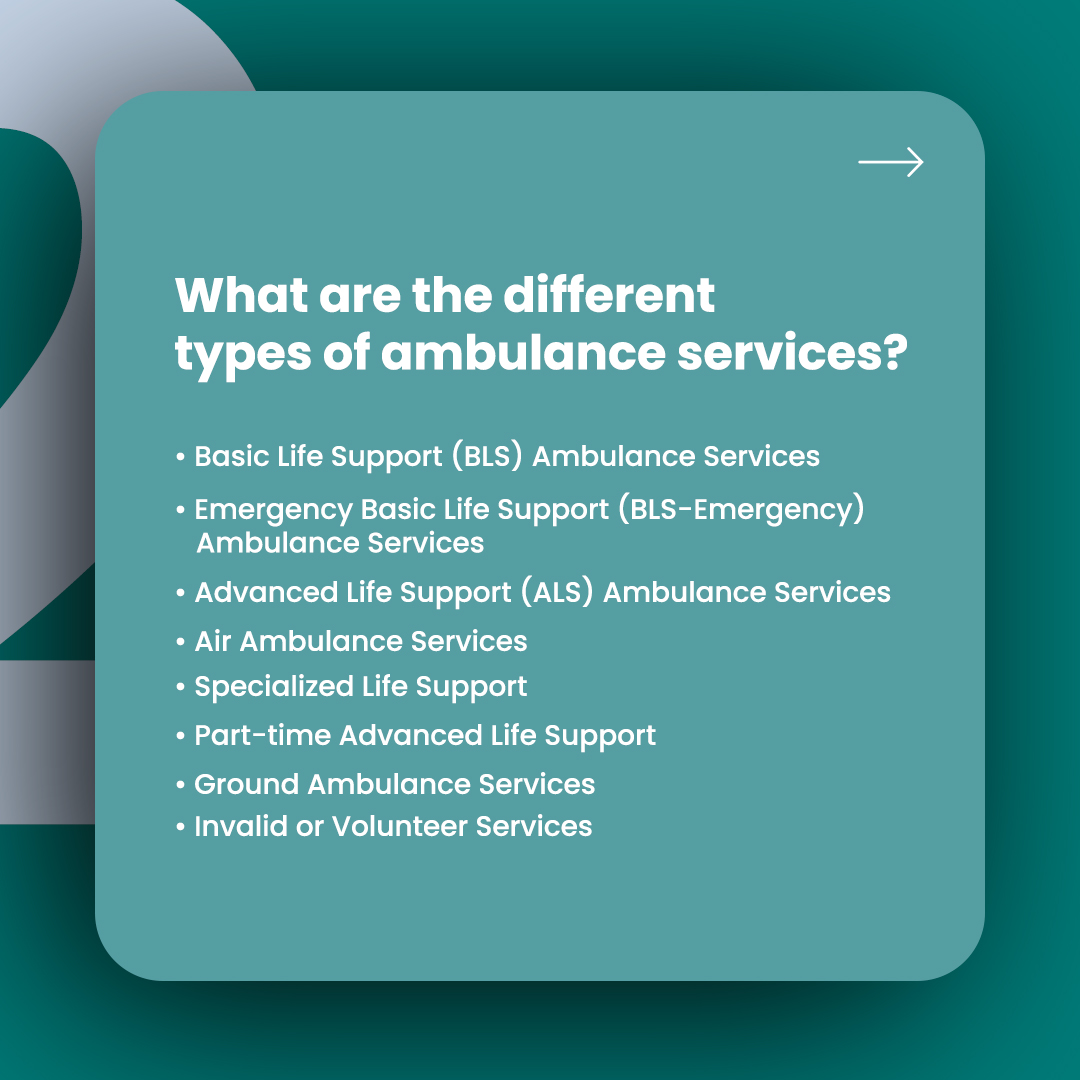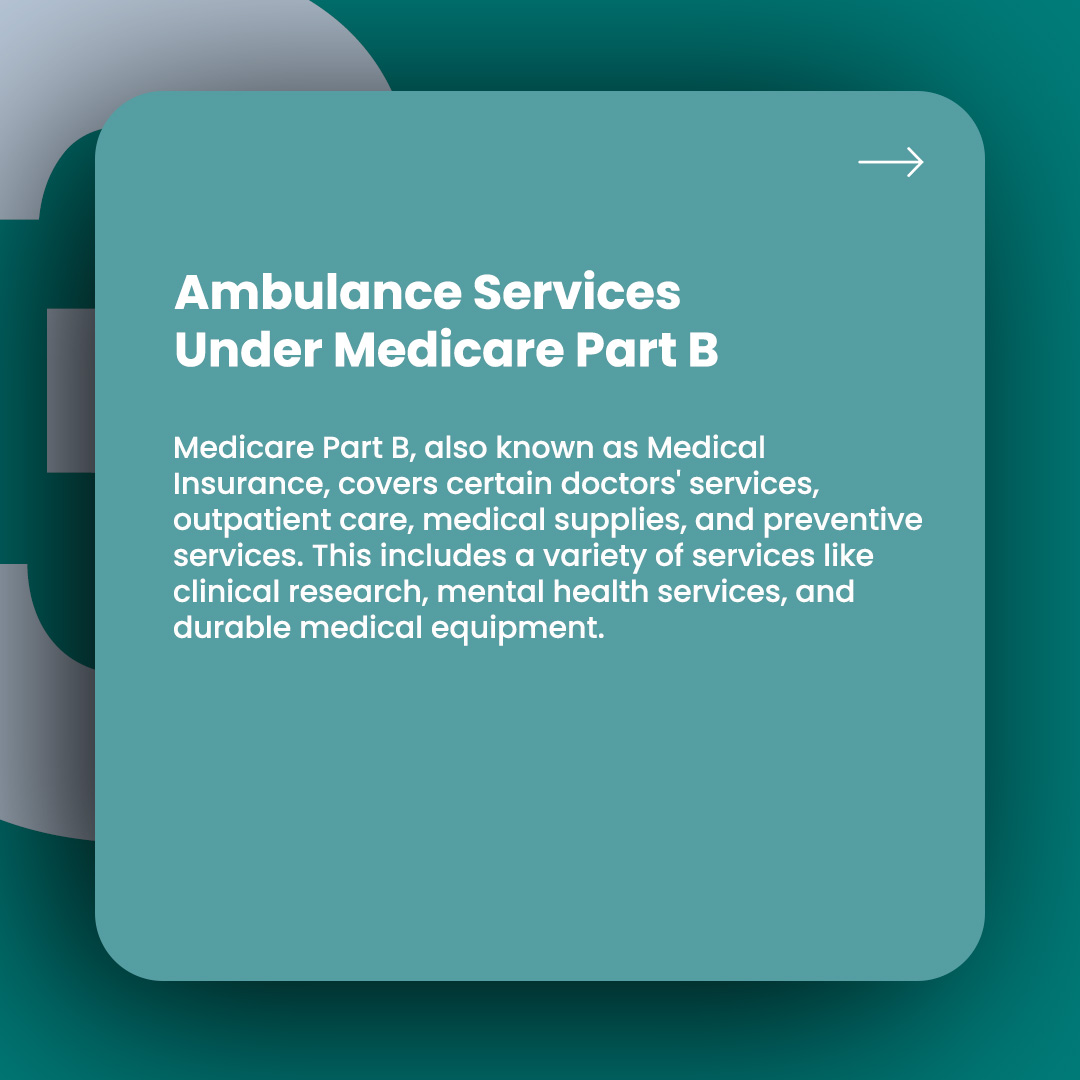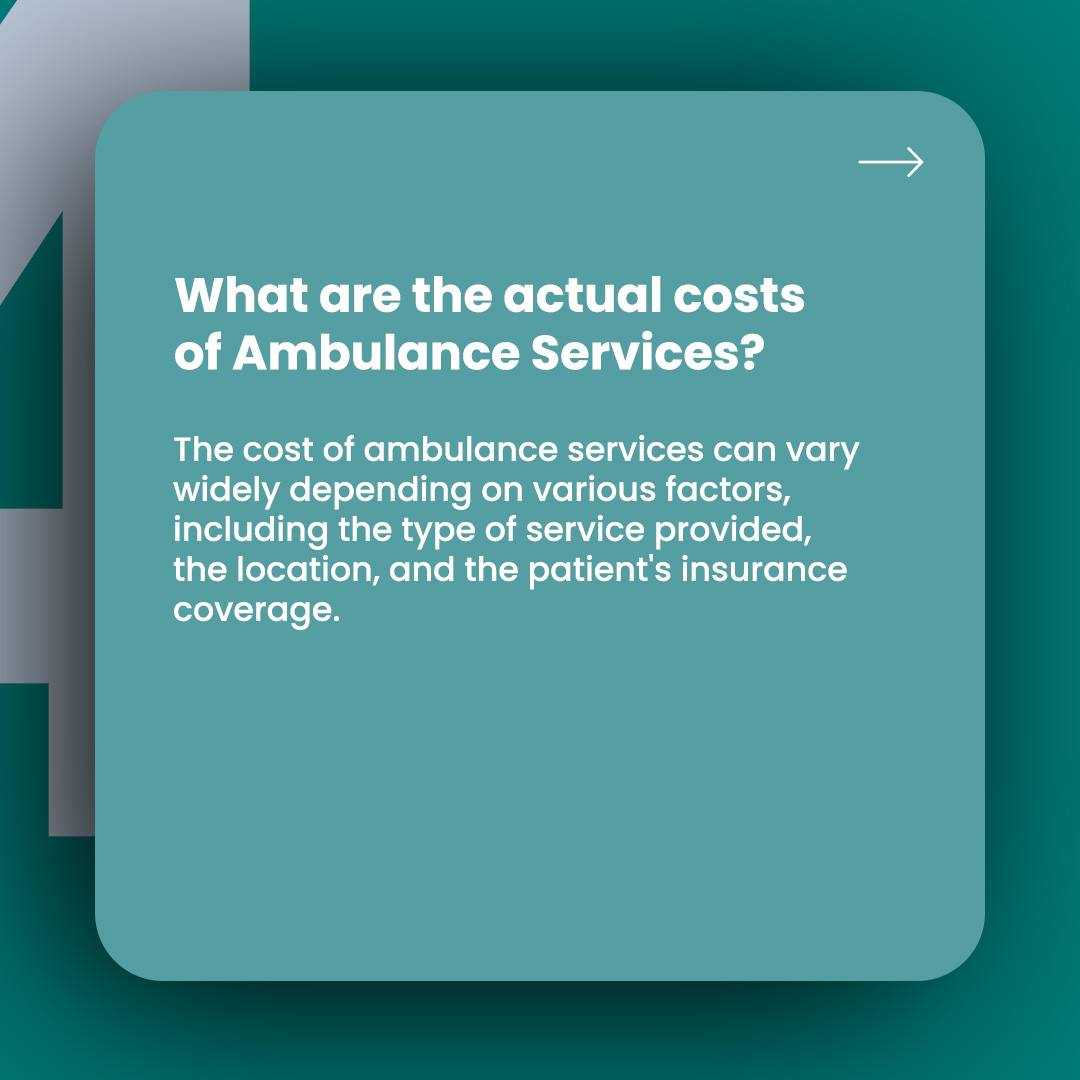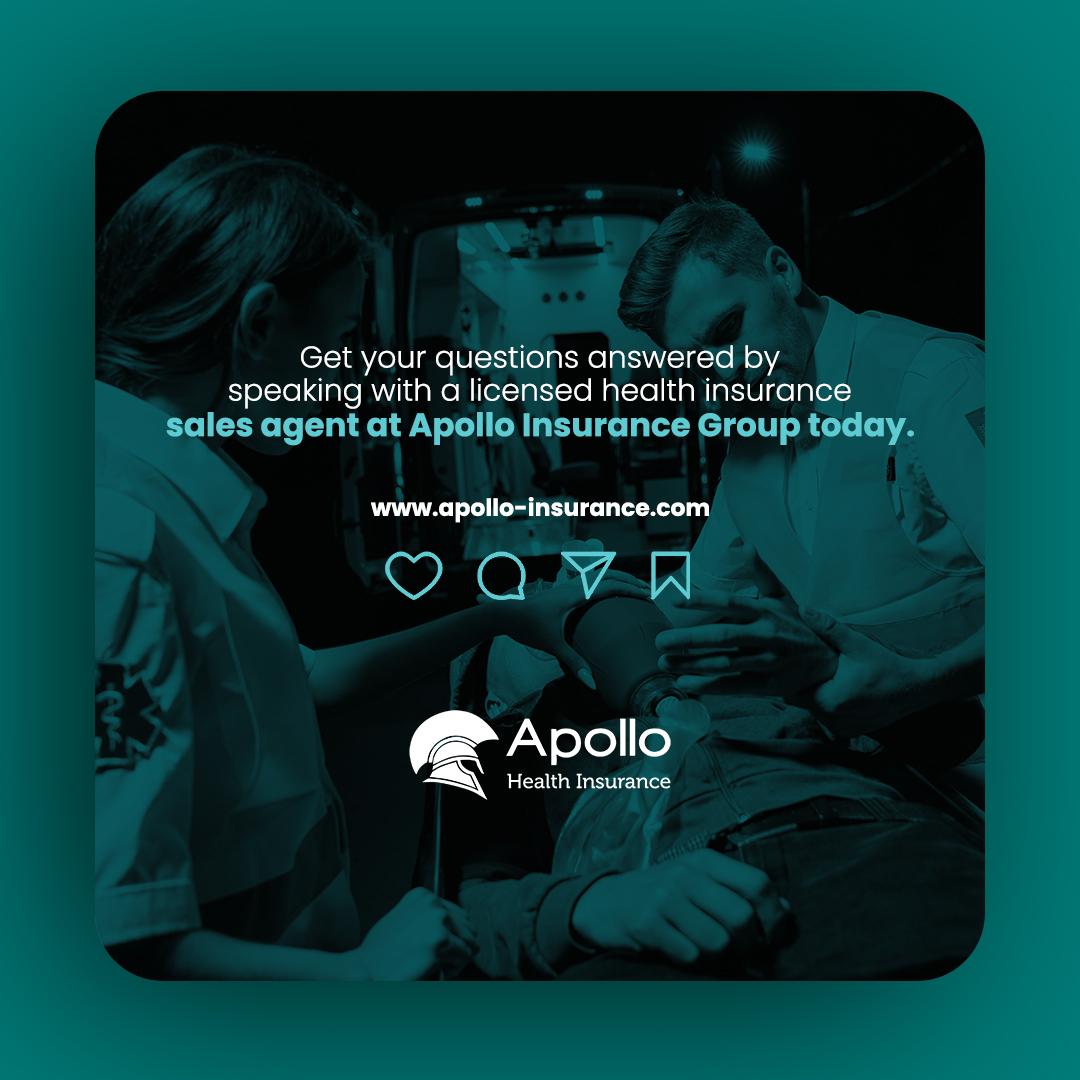It can be difficult to understand what Medicare covers.
With the various parts of Medicare, as well as all of the options for supplemental products designed to augment Original Medicare (or replace it), beneficiaries can be left scratching their heads wondering if even the most basic items are covered, such as ambulance services.
In short–yes, Medicare part B does cover ambulance services in particular situations, but not the entire bill.
Let’s take a closer look at how Original Medicare is structured and find out the details of how and when Medicare Part B covers ambulance services.
Need Expert Help From A Licensed Medicare Agent?
What are the parts of Medicare?
Medicare, a federal health insurance program in the United States, is composed of four distinct parts: Part A, Part B, Part C, and Part D.
Each part covers different types of healthcare services, providing coverage for individuals over 65 or with certain disabilities.
Part A
Medicare Part A, also known as Hospital Insurance, primarily covers inpatient hospital stays. This includes care received after a formal admission into a hospital by a physician. In addition to this, Part A also provides coverage for care in a skilled nursing facility (excluding long-term or custodial care), hospice care, and even some home health care services.
Part B
Medicare Part B, referred to as Medical Insurance, covers a broader range of services compared to Part A. It provides coverage for certain doctors’ services, outpatient care, medical supplies, and preventive services. Essentially, it covers two types of services: medically necessary services (services or supplies needed to diagnose or treat a medical condition), and preventive services (healthcare services to prevent illnesses or detect them at an early stage).
Part C
Medicare Part C, also known as Medicare Advantage Plans, is an alternative way to administer Medicare. It is offered by private companies approved by Medicare. These plans vary by carrier and region. It may be best to speak with a licensed health insurance sales agent to learn more about what options you may be eligible for that are available in your area.
Part D
Lastly, Medicare Part D offers prescription drug plans. These plans are offered by insurance companies and other private companies approved by Medicare. Like Part C, these plans can widely vary by carrier and region so it may be best to speak with a licensed health insurance sales agent to assess your options.
Medicare‘s different parts work together to provide comprehensive health coverage. The specifics of what each part covers can vary depending on the individual plan and the healthcare needs of the beneficiary. It’s always recommended to check with Medicare or a healthcare advisor when making decisions about health coverage.

What are the different types of ambulance services?
Ambulance services provide critical care and transportation to patients during emergencies and are categorized into several types based on the level of care they offer.
Basic Life Support (BLS) Ambulance Services
These services provide transport to a patient in non-emergency situations that require medical supervision. This includes a trained Emergency Medical Technician (EMT) to monitor the patient’s vitals and perform interventions as necessary.
Emergency Basic Life Support (BLS-Emergency) Ambulance Services
This service is used when immediate medical attention is required due to a severe, life-threatening condition. It provides rapid transport, basic medical monitoring, and emergency care.
Advanced Life Support (ALS) Ambulance Services
ALS services offer a higher level of care compared to BLS. They are staffed with paramedics trained to provide advanced medical care, including administering medications, interpreting EKGs, intravenous therapy, and more. These services are typically used for critical emergencies.
Air Ambulance Services
When a patient needs to be transported quickly over long distances or rough terrain, air ambulance services are used. These services include conventional air services and rotary-wing services, which use airplanes and helicopters, respectively.
Specialized Life Support
This type of service is designed to handle specific types of medical emergencies. The personnel in these ambulances have specialized training and equipment to deal with particular situations.
Part-time Advanced Life Support
This service operates for a limited number of hours per week and offers advanced life support care similar to full-time ALS services.
Ground Ambulance Services
These are standard ambulance services that operate on roadways. They can be further broken down into emergency and non-emergency services.
Invalid or Volunteer Services
These services typically cater to non-emergency medical transportation needs. Invalid services may transport bed-confined individuals, while volunteer services are often operated by trained volunteers.
Each type of ambulance service is designed to meet specific needs, and the use of each is determined by the nature and severity of a patient’s condition.

Ambulance Services Under Medicare Part B
As noted above, Medicare Part B, also known as Medical Insurance, covers certain doctors’ services, outpatient care, medical supplies, and preventive services.
This includes a variety of services like clinical research, mental health services, and durable medical equipment.
Medicare Part B does cover ambulance services. However, it’s essential to note that coverage applies under specific circumstances. Medicare Part B covers ground ambulance transportation when you need to be transported to a hospital, critical access hospital, or skilled nursing facility.
The coverage includes situations where other means of transportation could endanger your health. For instance, if you’re in shock, unconscious, or bleeding heavily, using a regular vehicle for transport may not be safe or feasible.
Medicare Part B also covers ambulance services in cases where you need urgent medical treatment that can only be provided in a hospital or skilled nursing facility. The ambulance must take you to the nearest hospital or skilled nursing facility capable of providing the appropriate level of care.
How Much Does Medicare Pay?
If Medicare covers your ambulance trip, it will pay 80% of the Medicare-approved amount after you’ve met the Part B deductible.
The remaining 20% is typically the patient’s responsibility unless they have supplemental insurance that covers the difference.
Medicare Coverage of Paramedic Services
Federal law requires Medicare Part B to cover ambulance services but does not specifically address paramedic intercepts. However, the ambulance crew must meet certain standards. For instance, at least two individuals must staff the ambulance, with at least one being an emergency medical technician (EMT) paramedic.
Non-Emergency Ambulance Services
Medicare also pays for non-emergency ambulance services when a beneficiary’s medical condition at the time of transport is such that other means of transportation are contraindicated.
This could include situations where the patient requires monitoring or administration of medications during transport.
The term “contraindicated” is often used in a medical context, referring to situations where a patient’s condition makes it inappropriate or harmful to use regular vehicles for transportation.
For example, if a person has suffered a severe injury or is in critical condition, they may need to be monitored by medical professionals during transport, require medical equipment that is only available in an ambulance, or need to be transported as quickly as possible. In these cases, using a personal car or public transportation would be contraindicated, meaning it could potentially worsen the patient’s condition or prevent them from receiving necessary care.
This term is also related to the Medicare requirement for ambulance services coverage. According to the Centers for Medicare & Medicaid Services (CMS), Medicare Part B covers emergency ambulance services when other methods of transportation could endanger your health.

What are the actual costs of Ambulance Services?
The cost of ambulance services can vary widely depending on various factors, including the type of service provided, the location, and the patient’s insurance coverage.
According to the Centers for Medicare & Medicaid Services (CMS), the Medicare Part B Ambulance Fee Schedule (AFS) is a national fee schedule for ambulance services. However, the exact costs are not specified in this source.
The U.S. Government Accountability Office (GAO) conducted a study on ambulance providers’ costs and Medicare margins. They found that the median cost per transport for the providers in their sample was $429, with a range from $224 to $2,204 per transport.
It’s important to note that these are average costs and can vary significantly based on the specific circumstances of each transport. Furthermore, these costs reflect the charges of the providers, not necessarily what patients would pay out-of-pocket, especially those with Medicare or other insurance coverage.
For Medicare beneficiaries, Medicare Part B generally covers 80% of the Medicare-approved amount for emergency and non-emergency ambulance services once the yearly deductible is met. In 2023, the Part B deductible is $226. This means that after meeting the deductible, a beneficiary would typically be responsible for 20% of the approved amount. This is also assuming the beneficiary is current on their premiums for part A and part B. The exact dollar amount for ambulance services can vary because the Medicare-approved amount can differ based on the region and specific service provided.
Can a Medicare Supplemental Insurance Plan help pay for ambulance services?
Yes, a Medicare Supplement Insurance (Medigap) plan can help pay for ambulance services.
According to the U.S. government’s official Medicare website, Medigap policies may help cover some of the health care costs that Original Medicare doesn’t cover, including copayments, coinsurance, and deductibles.
Medicare Part B generally covers ambulance services to or from a hospital, critical access hospital, or skilled nursing facility when other transportation could be harmful to your health. However, the beneficiary is typically responsible for 20% of the Medicare-approved amount after the yearly Part B deductible is met.
If you have a Medigap policy, it may cover the remaining 20% coinsurance for ambulance services that Medicare doesn’t pay for, depending on the specific policy. Each type of Medigap policy offers a different level of coverage, but all must cover at least a portion of the following basic benefits: Medicare Part A coinsurance, Medicare Part B coinsurance or copayment, blood, and hospice care.
Medicare Supplement Insurance, also known as Medigap, offers up to 10 different types of policies labeled A, B, C, D, F, G, K, L, M, and N. Each plan offers a different level of coverage but all must cover at least a portion of certain basic benefits.
However, as of January 1, 2020, Medigap Plans C and F are no longer available to new Medicare beneficiaries. These plans were discontinued because they cover the Part B deductible, and the law now prohibits the sale of Medigap policies that cover this deductible to newly eligible Medicare beneficiaries.
It’s important to note that if you were eligible for Medicare before January 1, 2020, you may still be able to buy Plan C or F. It may be helpful to speak with a licensed health insurance sales agent to navigate the plan options available in your area.

Medicare Part B does provide coverage for ambulance services, both in emergencies and certain non-emergency situations. However, it’s crucial to remember that coverage isn’t automatic or guaranteed in every situation. Medicare evaluates each case individually to determine whether ambulance transport was medically necessary and appropriate.
Knowing what Medicare covers can help you plan your healthcare effectively and avoid unexpected costs. If you have specific questions about your Medicare coverage or are unsure about a particular service, it’s always best to reach out to Medicare directly about your benefits. You can call at 1-800-MEDICARE. You can also download CMS’ “What’s Covered?” app.
It may also be helpful to speak with a licensed health insurance sales agent regarding what plan options you may be eligible for in your area. Navigating the world of Medicare can be complicated and confusing. Get your questions answered today by speaking with a licensed health insurance sales agent at Apollo Insurance Group. Call (913) 279-0077 to be directed to a licensed sales agent for a free plan comparison with no obligation to enroll.
Sources:
Medicare.gov – Ambulance Services Coverage
Medicare.gov – What Part B Covers
Medicare.gov – Your Medicare Coverage
CMS.gov – Non-Emergency Ambulance Services
OIG.hhs.gov – Medicare Payments for Ambulance Services
Medicare.gov – Medicare Coverage of Ambulance Services
CGA.CT.gov – Medicare Coverage of Paramedic Services
Medicare.gov – Parts of Medicare
Medicare.gov – What is Medicare Part A?
Medicare.gov – What Part B Covers
Medicare.gov – Your Medicare Coverage Choices
Medicare.gov – How Part D Works
CMS – Billing and Coding: Ambulance Services (A56468)
Minnesota EMSRB – Ambulance Services
Tennessee Health – Ambulance Service Information
CMS – Ambulance Fee Schedule & ZIP Code Files
GAO – Ambulance Providers: Costs and Medicare Margins Varied Widely
Medicare.gov – Ambulance services coverage
Medicare.gov – 2023 Medicare Costs
Medicare.gov – What’s Medicare Supplement Insurance (Medigap)?
I am a professional content writer specializing in the health insurance field. My work primarily focuses on simplifying the complexities of healthcare coverage, aiming to provide clarity and insight into an often confusing subject. Empowering people to make informed decisions about their well-being is my passion. At Apollo Health Insurance, we share that commitment. Apollo Health Insurance stands at the forefront of securing the best healthcare coverage for individuals, ensuring affordability without compromising on quality.



